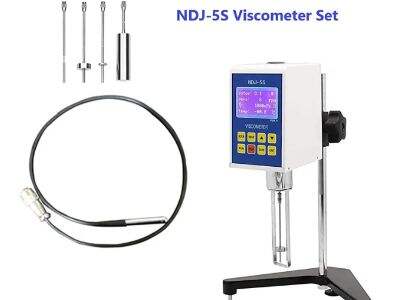Tiedätkö, mikä tekee limakkaasta tahmeaa ja hunajasta kitkerää? Kaikki liittyy viskositeettiin. Viskositeetti on termi, joka kuvaa nesteen paksuutta tai ohuttutta. Oletko koskaan miettinyt, kuinka tieteentekijät voivat määrittää nesteen paksuuden? He käyttävät erityistä laitetta, jota kutsutaan Teollinen laite viskosimeteri
Mikä on viskositeetti?
Jos kaadat siirappia pannekakkuusi, kuvittele tilanne. Jos se virtaa hitaasti, se tarkoittaa, että viskositeetti on korkea. Vesi puolestaan virtaa nopeasti ja sen viskositeetti on alhainen. Tieteentekijät tutkivat viskositeettia ymmärtääkseen, miten nesteet virtaavat ja vuorovaikuttavat.
Kuinka viskosimetti toimii?
Se on todella kiva työkalu, viskosimetti, jota käytetään viskositeetin mittaamiseen. Se mittaa, kuinka kauan keittää nesteen kulkea putken läpi. Tämä mahdollistaa tiedemiehille nesteen vertaamisen toiseen.
Viskosimetrin osat
Viskosimetrin merkittäviä osia tarvitaan viskositeetin mittaamiseen. Tämä komponentti on pyörivä akseli. Se sekoittaa nesteen ja saa sen virtaamaan. Kun neste virtaa, viskosimetri laite anturit mittaavat sen nopeuden ja viskositeetin. Tulokset näkyvät helposti luettavina lukumuodoin näytöllä.
Miksi viskositeetti on tärkeää?
Monet työt perustuvat vahvasti viskositeettiin. Ruokavalmistuksessa se varmistaa, että kastikkeet ja keitot ovat täydellisiä. Lääketieteessä se auttaa tiedemiehiä laskemaan veren virtausta elimistössämme. Muita etuja sisältävät tuotteiden parannukset, jotka käyttävät Laboratoriotuote viskosimetria.
Keskity viskosimetriaan ja laadunvalvontaan
Viskositeetin mittaaminen on viskositeetin mittaamista. Se varmistaa, että yritykset tuottavat korkealaatuisia tuotteita. Viskositeetin mittaaminen varmistaa, että maali, muste, öljy – tai mikä tahansa muu käytössä oleva aine – toimii yhdenmukaisesti. Tämä taataan asiakkaiden tyytyväisyys heidän ostoksiinsa.
Erilaiset viskosimetrityypit
On olemassa useita erilaisia viskosimetrejä eri tehtäviin. Paksuille nesteille, kuten suklaalle ja shamppoolle, pyörivä viskosimetri on ideaali. Maalien ja kosmetiikan testaukseen putteva palloviskosimetri sopii hyvin. Kapillaariviskosimetrejä käyttävät myös tutkijat, jotka haluavat ymmärtää paremmin, miten nesteet käyttäytyvät eri lämpötiloissa. Viskosimetrin valinta auttaa tutkijoita saamaan optimaaliset tiedot.












































